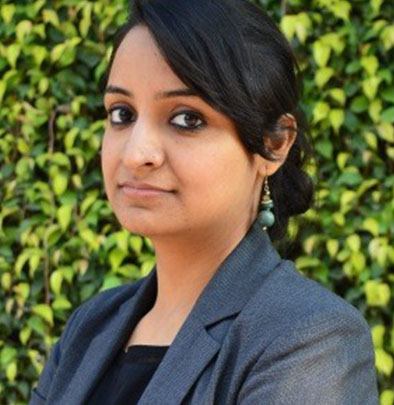How many accounts does a man have to open to be financially included?
by Sakshi Chadha
Nov 25, 2014
7 min
It was a hot afternoon during one of our recent agent network assessment studies, when I got the opportunity to meet Raju. He seemed no different from the typical participants in our focus group discussions in Bihar. A farmer somewhere in his middle 30s, thin and frail, wearing a half-sleeved ‘baniyan’ (vest) and pants with […]

When Raju approached the Business Correspondent (BC) agent’s outlet, the agent shouted at him “Kal aana … Aaj nahi ho paaega … Hum busy hain. Dekho shehar se loog aye hain (Come tomorrow … cannot assist today … I am busy. I have guests from the city)”’. The exhausted Raju looked disappointed and severely let down. When he got up to leave, we requested for a brief interaction with him. He was reluctant initially, but on the agent’s insistence agreed. Within a few minutes of interaction we discovered that this was his third visit to the agent’s counter in the last 2 months.
In the last three years Raju has made multiple unsuccessful efforts to be financially included. During his first attempt, he was able to open an account, but the agent could never support any transactions. He was later told that the mandate for the agent was to only open accounts, and the agent could not help him make transactions for lack of access to the required technology. Having learnt his first lesson, he later approached another agent who was actually transacting in a nearby village for an account. This time he opened a new and transactional account, but soon the agent went dormant because a new BC Network Manager got the contract to open accounts in his village. Raju was told that the new organisation will take time to appoint functional agents. The wait continued for more than six months, after which he gave up and contacted a new agent – the one we were interviewing. To his surprise, this agent is willing to solve his problem, but only if he opened a new bank account.
Raju was determined to have a bank account on which he could transact because he wanted to benefit from various government schemes and to save money to repair his house. In villages across India there are many, not as resolute as Raju, who dream to be financially included to get access to as saving services, remittances (sending and receiving money), pension and MNREGA payments etc. It is quite ironic that in the same country a rural customer faces such challenges to get access to banking services, while an urban customer has innumerable banks wooing him/her to open an account. As for Raju, the wait still continues. We hope that the delays do not extinguish his admirable determination to be financially included.
This incident highlights important aspects of the problems that financial inclusion (FI) in India is facing.
Part-1 of the problem: Whenever the Business Correspondent Network Managers (BCNMs) in an area change, more often than not, the new BCNM starts the account opening process for individual customers right from scratch. This mostly occurs due to lack of technical and backend compatibility across BCNMs and banks. To avoid further hassles and achieve account opening targets, banks also happily agree to reopen such accounts with new BCNM.
Very similarly, whenever there is a change in government policy, or the government itself, the process of financial inclusion starts afresh from the very beginning, with limited or no focus on activating or maintaining the already existing accounts. This was even apparent when Jan Dhan Yojana was announced this Independence Day. Initially, it was not made clear that the benefits offered would also be available for existing accounts. Now, the grapevine is abuzz with news that at least 25-30% of the new accounts are in fact duplicate.
Part-2 of the problem: Imagine a situation where the government distributes free cars (wish this were true) but the fuel stations stop selling fuel. What would happen? Most people would buy a car that would be left parked without serving any purpose. Similarly, the focus in financial inclusion has always been more on creating new accounts and much less on empowering customers to make transactions and derive any substantial benefit from them. Most bank accounts created for the purpose of financial inclusion hardly have any transactions taking place, making them virtually useless.
MicroSave “No Thrills – Dormancy in NFA Accounts “Behind the Big Numbers” reiterates how. The Business Standard also recently quoted a senior member from public sector bank stating that creating a bank account will not necessarily ensure financial inclusion as many of these accounts turn dormant within months after being opened. RBI recently warned the banks to be more careful while opening accounts under the Jan Dhan Yojana as a single individual could open multiple accounts in pursuit of INR 100,000 ($1,667) insurance cover.
Let’s take a step back and think through this. Regulators are well aware that we are adding thrift accounts solely to achieve targets; bank officials know this as they see the dormant accounts day-in and day-out on their servers; and even the customers know this as they have opened accounts before and will open others again just for the added benefits. We can all agree this is sub-optimal.
Based on our experience and interactions with FI stakeholders below are three key recommendations which will be vital to ensure long-term sustainability of FI initiatives:
-
- Make transactions and account activity a measure of FI success immediately: India’s mobile network operator (MNO) distribution channel has a well-designed and ever innovative commission structure that can be used in the FI sector too. For example, retailers are incentivised not just for the sales of SIM, but also for the first and second month recharges by the new prepaid customer. Similarly, our BCs should be incentivised not just for the opening of accounts, but also for subsequent transactions. Incentive alignment with the larger goal of account activity will ensure that the agent puts an effort to explain the product and its benefits to potential customers, and also help them use the account better. Who knows may be after understanding the benefits in detail, customers might actually adopt it? – This should ensure that we stop the account opening race – and resultant account dormancy epidemic.
- Lay down the foundation to build systems for credit assessment of the financially excluded customer base: FI was never about only opening accounts, but rather about providing the whole range of savings, credit and insurance services to customers currently excluded from the formal financial system. To create the customer pull, we need to ensure that credit is also made available to these customers; but banks will only offer credit to them if they are able to assess their creditworthiness with confidence. The MFIs in India have set up credit bureaus that appear to be functioning well. Organisations such as Cignifi and Lenddo have already started working on proxies to better judge creditworthiness of excluded individual customers. Just as MFIs have been able to establish themselves as sustainable organisations, we need banks to reach out to the excluded voluntarily and not due to some regulatory pressure. MicroSave’s work has already demonstrated that there is a clear business case for banks that are serious about using agent networks to deliver a range of financial services, so this really should not be tremendously difficult. It is a matter of will and intent. – Systems to assess credit worthiness of mass market customers should build the banks’ confidence to realise FI’s business potential.
- Drive all G2P payments through FI channels while ensuring supportive last mile communication: Across the globe, digital financial services (DFS) have been launched on the basis of core “anchor products” that provide the volume of transactions to underpin their initial rollout. These cash cows that allow the providers of services to enrol and serve large numbers of customers are typically remittances or government payments. In India, DFS has taken off at scale in the remittance corridors from major cities that host migrant workers who need to send money home quickly … but elsewhere continues to languish. The Government of India makes over $65 billion in G2P payments to tens of millions of its citizens every year. This provides a tremendous opportunity to provide an anchor product to underpin the country’s financial inclusion efforts. The government should make all G2P payments electronically, direct into bank accounts – thus providing transaction volume to the rural agents that currently struggle to break even. This needs to be accompanied by appropriate remuneration for front-line agents and the organisations that manage them, as well as appropriate beneficiary centric communication. Given the huge volumes in all G2P benefit schemes, it can act as a much needed cash cow for the otherwise struggling FI channel. – This will provide FI the anchor product it needs to launch and get to sustainable scale.
These recommendations are not sufficient to attain inclusion, but are the necessary pillars for financial inclusion to flourish in rural India. The above activities will do much to ensure that banks reach out to the excluded customers for the business proposition they offer and not the regulatory mandate pushing it.
Raju belongs to this ever increasing group of individuals who are included, re-included and then re-re-included in the “% of financially included Indians”. This much talked about percentage and its growth is good to flaunt on forums and in panels, however it’s on field utility to the rural poor still remains debatable.
Written by

 by
by  Nov 25, 2014
Nov 25, 2014 7 min
7 min
Leave comments